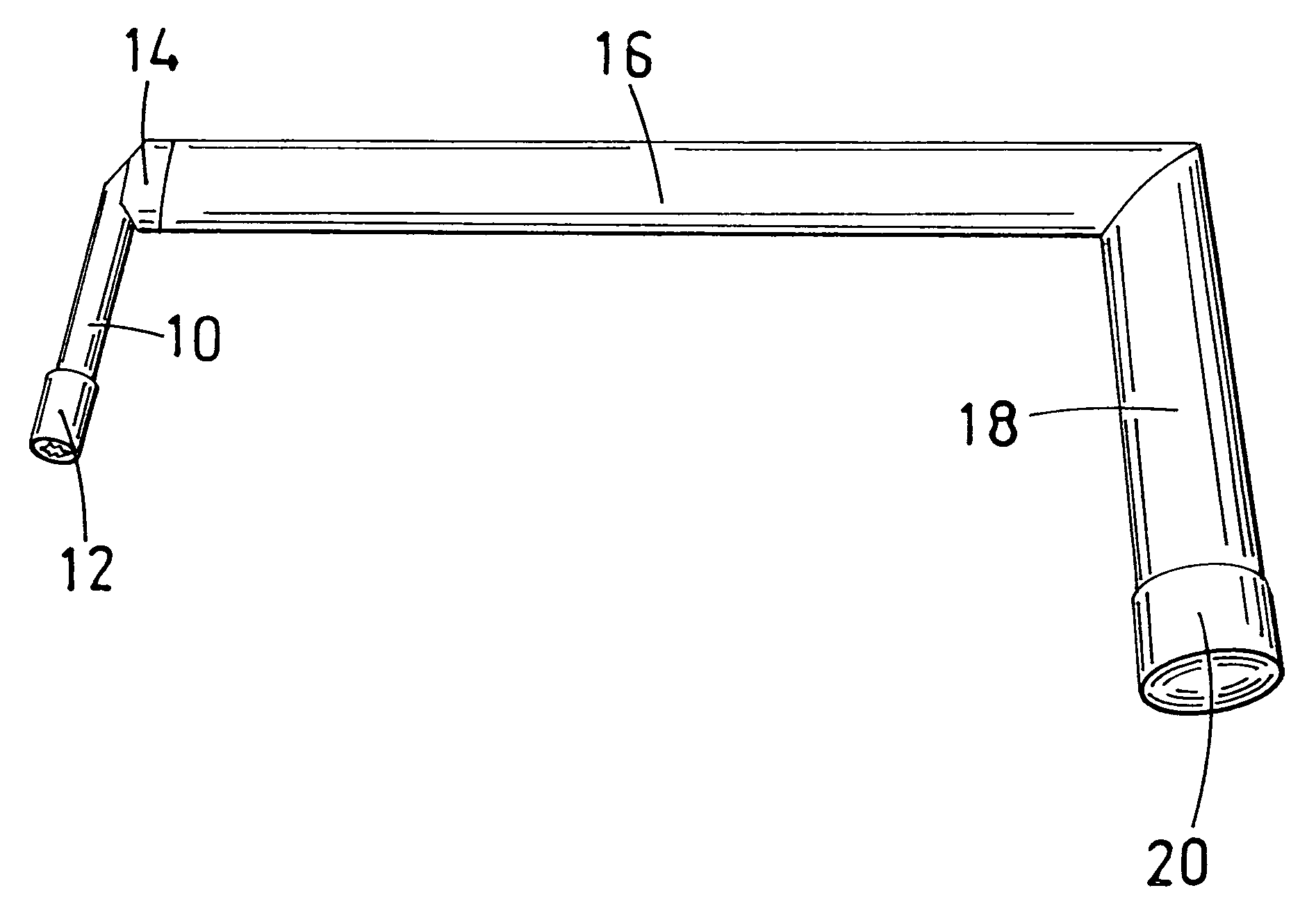Piano tuning hammer
a tuning hammer and piano technology, applied in stringed musical instruments, instruments, music aids, etc., can solve the problems of inability to adjust the pitch of the same tuning hammer so as to turn the pin without tilting, and the operator's ability to finely control the pitch of the attached string
- Summary
- Abstract
- Description
- Claims
- Application Information
AI Technical Summary
Benefits of technology
Problems solved by technology
Method used
Image
Examples
Embodiment Construction
—FIG 1
[0030]One embodiment of the tuning hammer is illustrated in FIG. 1. In this embodiment the tool is lightweight, rigid, and clears interfering structures in most pianos.
[0031]The tool in this embodiment has a head 10 composed of 304 stainless steel. Head 10 has a diameter of 0.500″ and is 4.125″ long overall. Head 10 is threaded at one end to accept a commercially available tuning tip 12 for engaging a tuning pin. Head 10 is beveled at its other end and welded to a head grip 14, also composed of 304 stainless steel. Head grip 14 has an overall diameter of 1.25″ and an overall length of 1.000,″ of which 0.375″ is fitted into the shank 16. One end of head grip 14 is tapered conically 0.250″ from its end at an angle of 45 degrees, and grooved to accept head 10 at a six degree angle. At its other end head grip 14 is relieved slightly to allow it to fit into shank 16, to which it is welded.
[0032]Shank 16 is a tube of 304 stainless steel, with an outside diameter of 1.25″, a wall thi...
PUM
 Login to View More
Login to View More Abstract
Description
Claims
Application Information
 Login to View More
Login to View More - R&D
- Intellectual Property
- Life Sciences
- Materials
- Tech Scout
- Unparalleled Data Quality
- Higher Quality Content
- 60% Fewer Hallucinations
Browse by: Latest US Patents, China's latest patents, Technical Efficacy Thesaurus, Application Domain, Technology Topic, Popular Technical Reports.
© 2025 PatSnap. All rights reserved.Legal|Privacy policy|Modern Slavery Act Transparency Statement|Sitemap|About US| Contact US: help@patsnap.com


